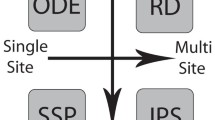
Overview
- The first book addressing the timely and important co-extinction problem
- Serves as a comprehensive review for understanding the role of ecological interactions in extinction processes
- Offers new angles on the perception of species vulnerability and biodiversity loss
Part of the book series: Fascinating Life Sciences (FLS)
Access this book
Tax calculation will be finalised at checkout
Other ways to access
About this book
We are in the midst of the sixth mass extinction. We see species declining and vanishing one after another. Poached rhinos, dolphins and whales slaughtered, pandas surviving only in captivity are strong emotional testimonials of what is happening. Yet, the main threat to natural communities may be overshadowed by the disappearance of large species, with most extinctions happening unnoticed and involving less eye-catching organisms, such as parasites and pollinators. Ecosystems hide countless, invisible wires connecting organisms in dense networks of ecological interactions. Through these networks, perturbations can propagate from one species to another, producing unpredictable effects. In worst case scenarios, the lossof one species might doom many others to extinction. Ecologists now consider such mechanisms as a fundamental – and still poorly understood - driver of the ongoing biodiversity crisis. Hidden Pathways to Extinction makes the invisible links connecting the fates of species and organisms evident, exploring why complexity can enhance ecosystem stability and yet accelerate species loss. Page after page, Strona provides convincing evidence that we are primarily responsible for the fall in biodiversity, that we are falling too, and that we need to redouble our conservation efforts now, or it won't be long before we hit the ground.
Similar content being viewed by others
Keywords
Table of contents (14 chapters)
-
Front Matter
Authors and Affiliations
About the author
Bibliographic Information
Book Title: Hidden Pathways to Extinction
Authors: Giovanni Strona
Series Title: Fascinating Life Sciences
DOI: https://doi.org/10.1007/978-3-030-86764-5
Publisher: Springer Cham
eBook Packages: Biomedical and Life Sciences, Biomedical and Life Sciences (R0)
Copyright Information: Springer Nature Switzerland AG 2022
Hardcover ISBN: 978-3-030-86763-8Published: 18 May 2022
Softcover ISBN: 978-3-030-86766-9Published: 19 May 2023
eBook ISBN: 978-3-030-86764-5Published: 17 May 2022
Series ISSN: 2509-6745
Series E-ISSN: 2509-6753
Edition Number: 1
Number of Pages: IX, 237
Number of Illustrations: 37 b/w illustrations, 51 illustrations in colour
Topics: Animal Ecology, Parasitology, Nature Conservation, Conservation Biology/Ecology, Climate Change, Applied Ecology



